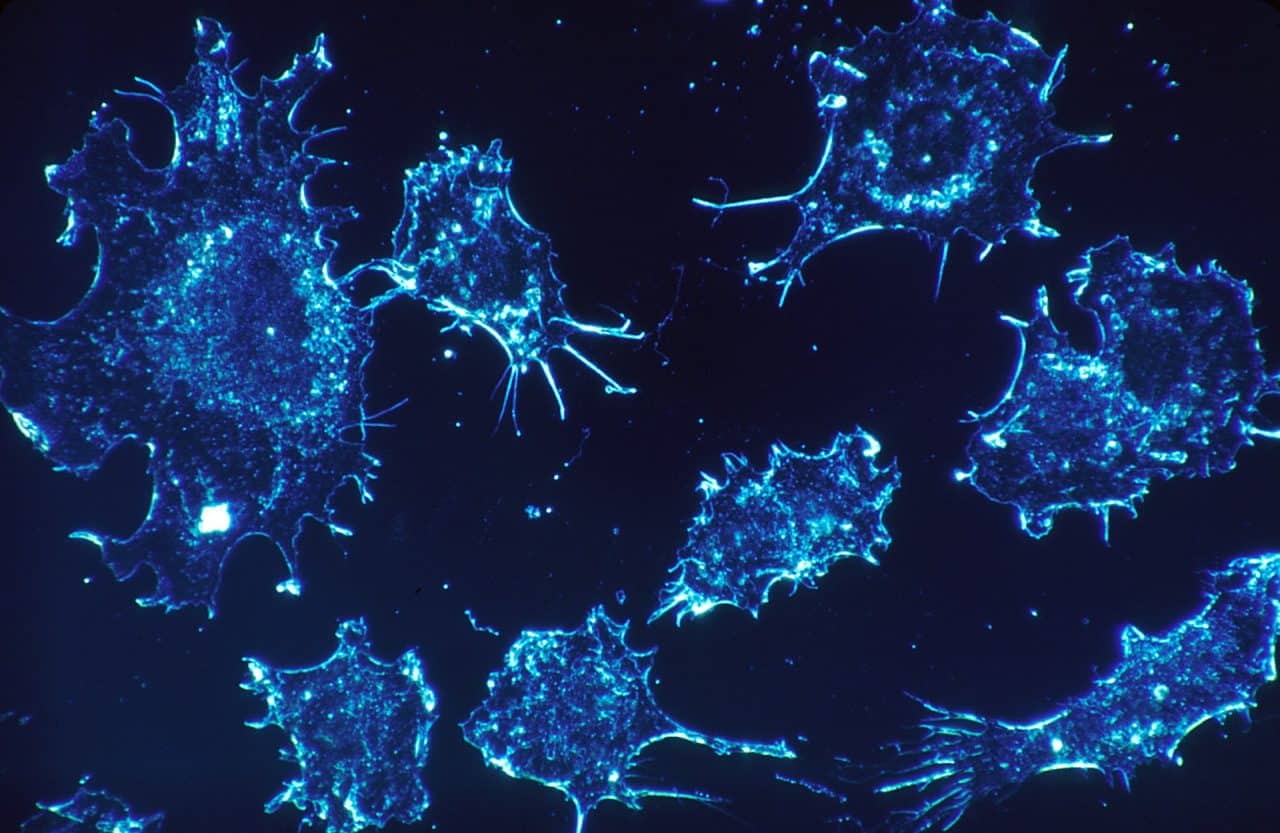
When cancer cells travel through the body, metastases are often likely to develop. These metastases generally spread in two ways. They may metastasize via the lymphatic vessels, lymph nodes, and blood vessels into other organs. Other cells travel directly from the tumor into the bloodstream and then further throughout the whole body. These metastases are responsible for nearly 90 percent of deaths in cancer patients. Researchers at the Paul Scherrer Institute in collaboration with colleagues from the pharmaceutical company F. Hoffmann-La Roche AG have now taken a major step toward developing a drug to prevent the spread of these types of tumors.
In the cells of all vertebrates – including humans – there are 20 different chemokine receptors that can interact with more than 40 signaling proteins known as chemokines. “Each of these signaling proteins latches on solely to very specific receptors. In turn, if one of the signaling proteins binds to a receptor, it triggers processes inside the cell that lead to a specific cellular response to a signal,” the scientists explain.
A special membrane protein, the chemokine receptor 7 (CCR7), plays an important role in the spread of metastases throughout the body. It sits in the cell membrane and can receive external signals and relay them to the internal cell membrane. This CCR7 is one of those receptors that control the movement of cells in the body and can trigger a chain reaction as soon as the appropriate signal protein binds to it outside of the cell. The cell then moves in the direction where the highest concentration of signaling protein is and follows the chemokine track “like a bloodhound.” This way, white blood cells, crucial cells for the body’s immune system, are also directed to the lymph nodes.
With the help of this CCR7, cancer cells also find their way from the tumor into the lymphatic vessel system and can thereby also form metastases in other organs and body tissues, which in turn drastically increases the mortality rate of those affected. If this metastasis of the malignant cells could be prevented, the survival rate of cancer patients would increase significantly.

One agent is already being tested in clinical trials
Subsequently, the scientists used X-ray crystallography at the Swiss Light Source SLS synchrotron at PSI in order to decipher the structure of the CCR7 receptor, as this structure served as the basis of the quest for associated active substances that could prevent the spread of cancer cells via the lymphatic system, for example in colon cancer. “The right molecule can prevent the signaling protein from latching on to the receptor and causing a reaction in the cell,” explains Steffen Brünle. He conducted the study as a postdoctoral researcher in the PSI-FELLOW-II-3i program and is one of the initial authors of the paper, which was published in the journal Cell.
Deciphering the structure of the receptor was a real challenge. “The difficult thing about it was producing them, in the first place, in such a way that we could examine them with X-ray crystallography,” says Jörg Standfuss, co-leader of the project and of the Time-Resolved Crystallography research group at PSI. To speed up the investigation process, Roche developed its own new protein-modifying technology modules, so-called crystallization chaperones.
Due to the information about the precise structure of the receptor, the researchers were able to identify a suitable molecule that blocks the receptor and making it unable to transmit a signal to the cell. “Our experiments show that the artificial molecule, inside the cell, binds to the receptor. This prevents the chain reaction that leads to cell migration from starting up,” Brünle says.
In computer simulations, the scientists looked for appropriate agents that might be suitable for blocking the signaling protein. They identified five agents as potential candidates for further development of potential cancer therapy drugs, one of which is already being tested by the pharmaceutical industry in clinical trials as a potential drug against metastasis. However, it had previously been assumed that it binds to a different receptor and therefore inhibits a different function of the cancer cell.





